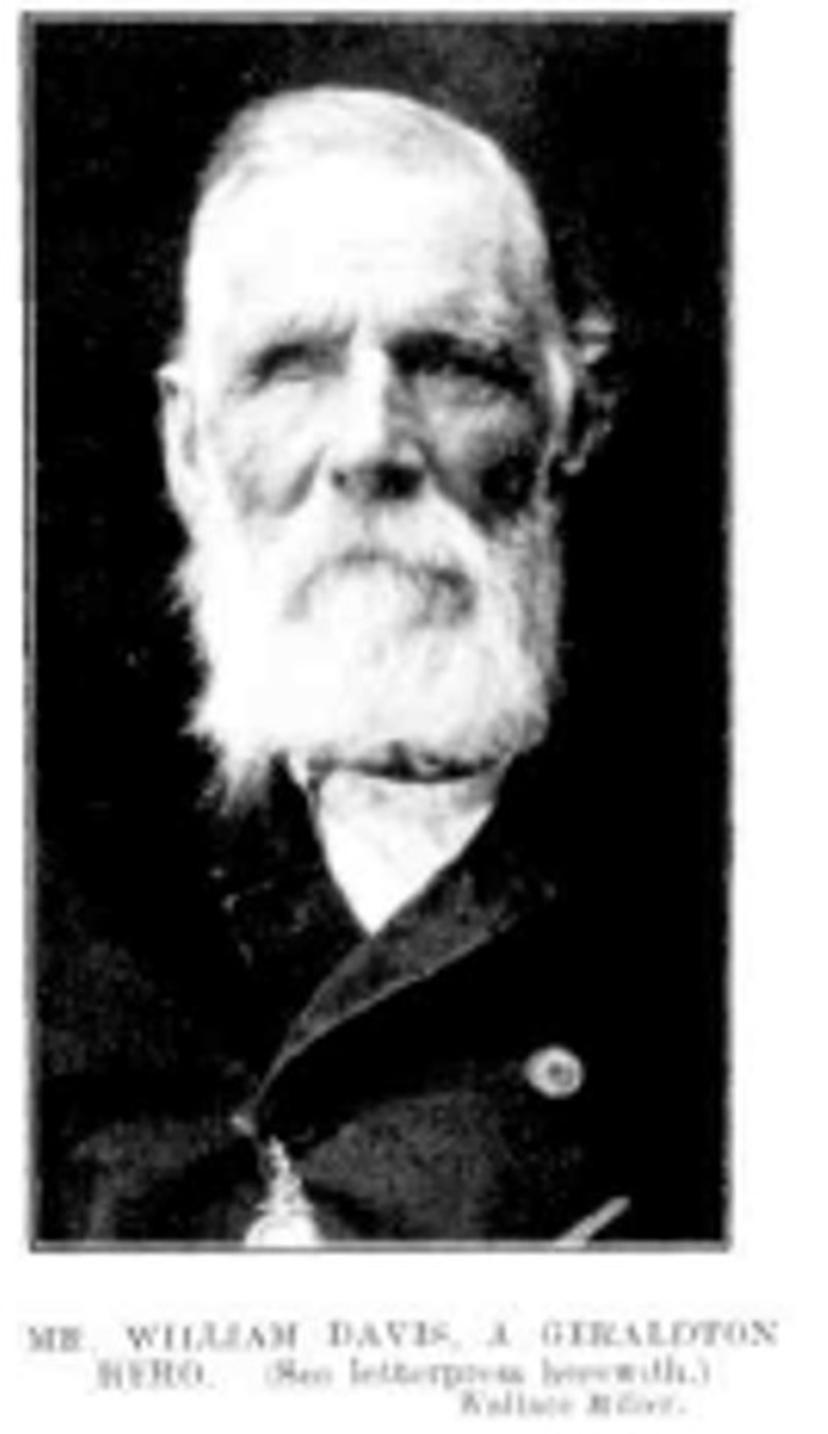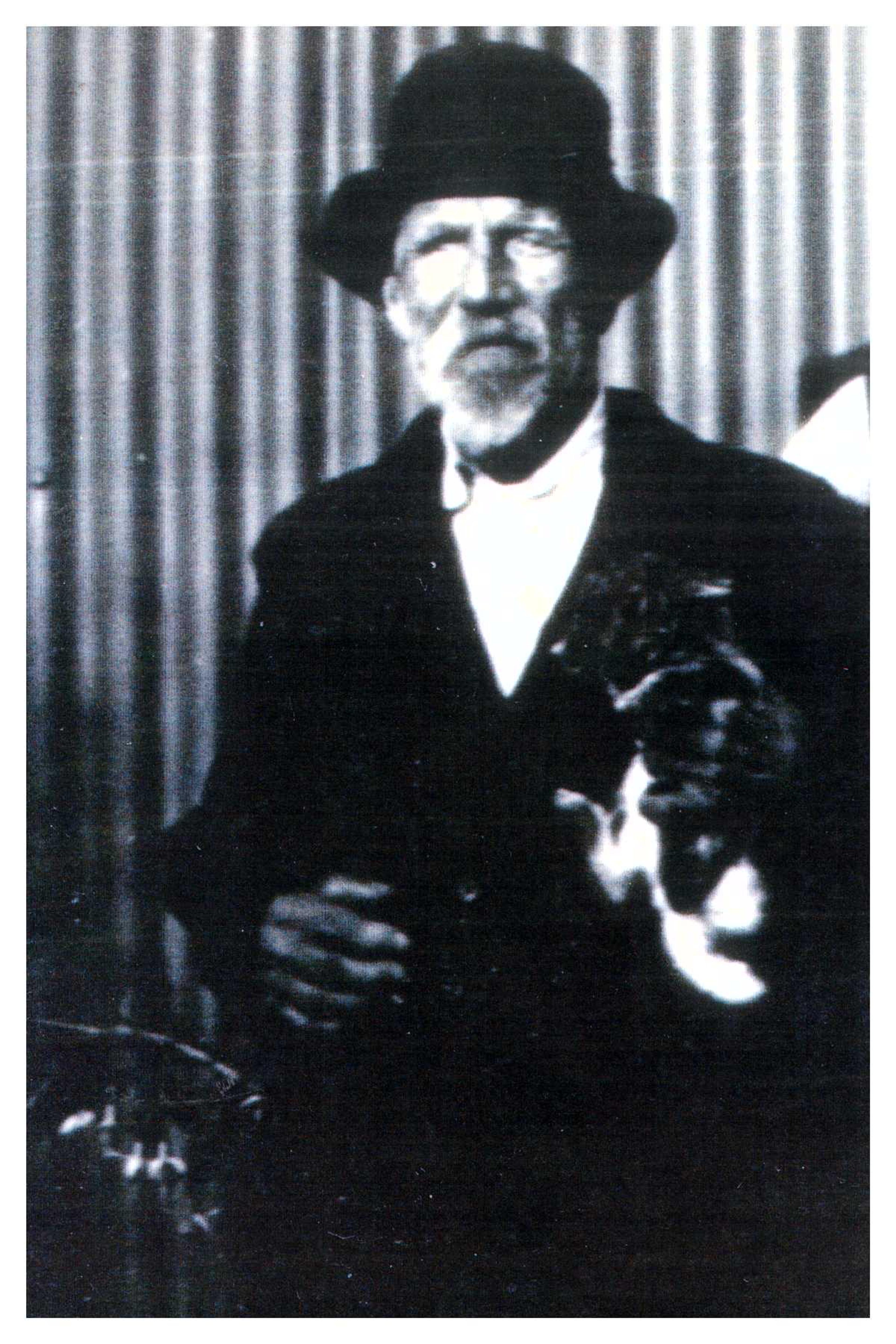Frederick Davis
Frederick Davis
Drowned at Sea; Body never recovered
22 April 1909

William Crabby Davis

William Crabby Davis mourned his son until his dying days
On Thursday 22 April, Frederick Davis, the youngest son of William Charles “Crabby” (or “Crabbie)” Davis went round Point Moore in a small sailing dinghy to catch some fish.
His Father had advised him not to go that day on account of bad weather. At around 9am he was fishing near the “big reef” off Separation Point, about two miles to the south of Point Moore lighthouse. The reef can be reached from the shore at low water, and runs straight out from the shore for about half a mile.
He did not return as expected, so his brother Charles Davis and his brother-in-law William Grigsby went in search of him in another boat, but failed to find him. The search was continued from the shore, with the Back Beach being “paraded by several parties with lanterns.”
During the night, the searchers found a cap, a rudder, a paddle and a piece of decking which belonged to the missing boat. Fred’s older brother Edward had previously survived by performing a long-distance swim when he had lost his boat off Point Moore, and Frederick was described as a strong swimmer. Frederick Davis was never found and the mystery was never solved.
The area known as “The Back”, or South Beach in Grey’s Bay has been notorious for other tragedies, including the drowning of a young Irishman named James Sheridan. Other mishaps have included a prisoner, another man named Leslie Frewin and an Italian Fisherman named Autolos.
William Charles “Crabby” Davis, was born in Kent, England, having been transported to Australia in 1863 onboard the Lord Dalhousie, after being sentenced to 10 years for arson.
“Crabby” got his name when he was on Rottnest Island, by then a ticket of leave man. He was caught “fishing,” which was a crime for these unfortunate men. His defence was that “he was not fishing, he was crabbing”. He got off, and even afterwards answered to the name of “Crabby”.
In 1873, he left Fremantle in the lighter, Moonlight, and was engaged in the lightering and fishing business. He caught Blue Manor crabs at the West End beach area in Geraldton. Here he built a one-plank jetty, which became known as “Crabby Davis’ Jetty.”
His children (11 in total), ran barefooted down this single planked jetty and never fell in the water, much to the admiration of the land lubbers. He was described as a genial soul, wearing a shade over one empty eye-socket. In 1915, he was awarded the Royal Humane Society’s Certificate of Merit for saving a boy from drowning. He had lost a brother, Edward Davis in 1888 when falling off the cutter, Daylight. He later took Sir John Forrest on an exploring expedition around the Abrolhos Islands, and Maitland Brown as far as Carnarvon.
“Crabby” Davis and his sons were described as expert fishermen and competent watermen, repeatedly rendering valuable aid in other boating accidents in the bay and adjacent waters.
The Geraldton Guardian paid tribute to his contribution upon his death, “There was no better known figure in Geraldton than that of “Crabby” Davis, either to this or the preceding generation, so long had he lived in the town, and seen it grow from a very small settlement to its present important position. He had an unrivalled knowledge of this portion of the coast, and his opinion, based on long years of experience and careful observation, was always deferred to in the matter of weather conditions. He continued an active life long after most people would have been content to east off and rest, and was always a vigorous, optimistic individual.”
“Crabby” made a grave out at Separation Point and mourned his youngest son, Frederick, to his dying days.
